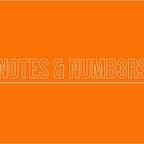The World of Music Syncs
In 2020, the world witnessed a global pandemic change the way the world operates. Masks were mandatory, social distancing was introduced, working from home became a norm and our mental fortitudes were tested. During these tornado of changes, live music was heavily affected. Large gatherings were banned, thus making festivals and indoor concerts impossible to take place, billions were lost. For many artists, touring and festivals was their main source of income. With that temporarily not available, what is the alternative? In this piece, I am going to explore the world of music synchronisation.
Music synchronisation (sync) is the licensing of music within different forms of mediums for example many video games have soundtracks which will consist of a plethora of records. Electronic Arts (EA) do this every year with their ever popular FIFA series. The same can be seen in movies which may include a mix of recognisable records or scores made specifically for the movie. Music sync can also be seen in adverts too. During this agreement, a payment structure would have been agreed between the licensee and the licensor. In many cases this may include a third party in the form of a publisher if the licensor, which could be an artist in most cases, is signed to a publisher to collect all royalties and also explore new opportunities such as sync deals.
A notable sync deal in 2020 was Travis Scott’s Fortnite virtual concert. Albeit a virtual concert, his intellectual property was used and he is entitled to a payment. According to Billboard, over 27 million unique players witnessed the concert. “Games are the new venues of tomorrow” this was according to music and tech analyst Mark Mulligan from MIDiA Research. As the pandemic continues to cripple live music, this may appear to be a new avenue that artists can explore but is it available to everyone?
According to IFPI, music sync equated for around $500 million (see chart below) in 2019 which accounts for 2.4% of the global recorded music industry which is an increase over the past two years. In comparison to other revenue making avenues, this is significantly low, compared to paid streaming which equates for 52% of all revenue made in 2019. One of the reasons for such low numbers is the difficulty to identify the copyright holder and contact them. Up until recently, such information was and still isn’t available to an extent. Spotify has made it readily available to view song credits to identify the contributors. Spotify as well as others have also made it clear who is the copyright holder at the bottom of all projects, be that singles, EP’s or albums. Whilst all this information is available, the difficulty that may arise is multiple copyright holders and having no means of being able to identify them or contact them. No such directory exists, making the task at hand harder than it needs to be. This unnecessary bottleneck contributes to a largely untapped revenue stream. The issue of identifying copyright holders is far less complicated when dealing with independent artists. Alongside his managers, UK Rapper Avelino agreed a joint venture deal with Cooking Vinyl Publishing to form Sync Music Ltd to administer his catalogue to be used in other mediums.
Podcasts should be considered as a potential medium to tap into music syncs. As an ever growing industry that has made a revenue of over $344 million in America alone in 2018, the appetite for continuous growth is there to see. With multiple acquisitions from established platforms, the podcasting world continues to grow at such a vast pace. Despite the glaring copyright infringements that can and has been violated by many podcasters, The potential is glaringly obvious if all hurdles can be overcome. The Joe Budden Podcast uses music to create engagement and break new artists with Joe Budden playing music at the start of each episode and all co-hosts presenting their ‘sleeper picks’ at the end of each episode. At the IAB Podcast Upfronts, Sony Music announced that they would be creating over 40 original shows. Should they want to use their own intellectual property, this eliminates the partnership with a third party and potentially generates revenue growth in digital and streaming sales.
Music Sync is clearly an untapped revenue stream but not for all. Independent artists are far more desirable and remove any forms of bottlenecks that exist in the complex world of signed artists. This however only affects artists in such situations, record labels are still making record profits from established revenue streams which could be a defining factor to such low profits from syncs. Recorded music is missing a big opportunity due to its archaic infrastructure. Will the pandemic open their eyes to innovation or will it continue to leave potentially vast amounts on the table?
